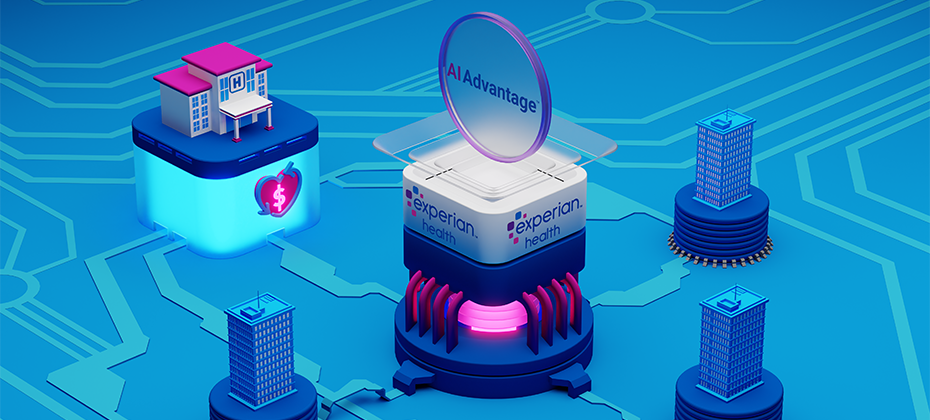Tag: claim denials

With the ability to be applied across many different areas – from disease prediction to claims management and administrative tasks – data and analytics in healthcare is booming. In fact, according to a Grand View Research report, the global market for data analytics was valued in 2022 at $35 billion and is expected to increase at a compound annual growth rate of 21.4% until 2027. So, why the rapid growth? How can healthcare data analytics be used across the healthcare revenue cycle? The role of data and analytics in healthcare Historically, there has been a large amount of healthcare data being generated, but the industry has struggled to properly leverage this data into useful insights that improve patient outcomes, operations, or revenue. Today, with increasingly advanced data analytics, healthcare providers are using real-time data-driven forecasts to stay nimble and pivot quickly in rapidly changing healthcare and economic environments. And there is more data collaboration between healthcare organizations to convert analytics-ready data into business-ready information, thanks to the ability to automate low-impact data management tasks. Data-derived intelligence is also now easier to share with colleagues, third parties and the public. Types of healthcare data analytics methodologies and tools Healthcare data analytics involves several different types of methodologies and tools – all of which can be applied to various aspects of revenue cycle management. For example, descriptive analytics allows organizations to review data from the past to gain insights about previous trends or benchmarks. Predictive analytics, on the other hand, uses modeling and forecasting to help predict future results. When a strategic course of action is needed based on certain data inputs, prescriptive analytics is used. If a provider wants to take a deep dive into raw data to uncover patterns, outliers, and interconnection, they may employ discovery analytics. There are also generally three categories of technology-driven tools that can help collect and convert raw data into usable insights during the revenue cycle, including: Solutions that gather data from a wide variety of sources, such as patient case files, machine-to-machine data transfers, and patient surveys Programs designed to scrub, validate, and analyze data in response to a specific question being researched Software created to leverage the results produced by the analysis into actionable suggestions that be applied to meet specific goals Applying data analytics to maximize revenue “There are many things driving near-constant change in the healthcare revenue cycle, including shifting reimbursement, evolving value-based payment models, growing regulatory pressures, and increasing provider risk and patient responsibility,” says John Menard, VP of Product, Analytics, at Experian Health. “Healthcare organizations are also adapting to value versus volume reimbursement models, requiring revenue cycle leaders to lean into leveraging data analytics to improve not just operational efficiency, but patient financial experience and quality outcomes as well." Here's a closer look at how data analytics can help with revenue cycle management: Assessing patient finances From registration to collections, data analytics can play a key role at every step of the patient journey – and revenue cycle. Not only can the right data analytics tools help healthcare organizations better assess a patient's individual financial circumstances, but they can also help providers create accurate estimates and payment plan recommendations. Data-driven technology can help providers reduce surprise billing through more transparent pricing, helping patients navigate the cost of care and providing more timely patient communication. Digital solutions can help improve the patient financial journey by: Providing a self-service patient portal – With a solution like PatientSimple, patients get convenient 24/7 access to self-service account management tools. They can use the online portal to log into their healthcare account to securely process payments, request or review payment estimates, and schedule appointments. The portal also provides patient access to pricing information, plus the ability to apply for financial assistance or set up payment plans. With easy-to-use patient online tools, patients are more likely to meet their self-pay responsibilities and providers get paid more quickly as a result. Offering payment solutions – To collect payments with confidence, healthcare providers can utilize comprehensive data collection and advanced analytics through a digital solution like Patient Financial Clearance. With this solution, providers use a patient's financial data to quickly assess a patient's propensity and likelihood to pay prior to treatment. When appropriate, providers can then offer empathetic financial counseling and connect those that potentially qualify to financial assistance programs. By applying data analytics to this payment solution, healthcare organizations can increase point-of-service collections while reducing bad debt—in real-time. Providing patients with more accurate estimates – A recent Experian Health study found that 4 in 10 patients said they spent more on healthcare than they could afford. However, when patients know the expected cost of their care up front, they feel more empowered and make better decisions. Patient Estimates lets providers create more accurate estimates, eliminate manual tasks and improve patient satisfaction. Plus, it allows providers to automate and standardize their price transparency practices, which can help healthcare organizations meet regulatory requirements, create a more positive patient experience and increase revenue at the point of service. Reduce denied claims According to Experian Health's 2022 State of Claims survey, denied claims are on the rise with 42% of providers reporting that denials increased in the past year. 47% of respondents also said improving clean claims rates was a top pain point. Digital solutions can help providers reduce denied claims and increase revenue by: Automating claims management – With a solution like ClaimSource®, providers can automate their claims management systems – helping to ensure claims are clean before they are submitted to a government or commercial payer. Using an automated solution also allows providers to streamline the claims management process from a single web application. With ClaimSource, providers can easily analyze claims, payer compliance and insurance eligibility. Plus, it allows staff to prioritize their workload and focus on high-impact accounts – resulting in claims denial rates of just 4% compared to the industry average of more than 10%+. Optimizing efficiencies through artificial intelligence – Incorporating artificial intelligence (AI) into an automated claims management solution enhances the claims process in two key moments: before claim submission and after claim denial. AI Advantage™ integrates seamlessly with ClaimSource to continuously learn and adapt to ever-changing payer rules. The solution features two AI offerings, AI Advantage – Predictive Denials and Denial Triage, which can be customized to prioritization thresholds. Verify insurance and patient information Missing patient healthcare data can be a headache for providers to hunt down but looking for active coverage is often necessary. Providers must contend with a range of factors impacting patient coverage – including forgotten coverage, inadequate coverage, patients being misclassified as self-pay and regulatory changes, particularly with Medicaid and Medicare coverage. Implementing digital solutions can help providers use data to verify and find missing patient health insurance coverage, optimize patient collections, and boost revenue by: Utilizing automated, real-time insurance verification – Verifying patient coverage prior to service using a digital solution, such as Experian Health's Insurance Eligibility Verification. This tool can help providers experience fewer payment delays and claim denials. Plus, verifying insurance with automated insurance eligibility and benefits data improves cash flow, reduces claims denials and speeds up payments, including Medicare reimbursements. Patients also feel empowered with accurate payment estimates and accelerated registration, leading to a better patient experience overall. Improving collections with better data – With Collections Optimization Manager, providers can screen out bankruptcies, deceased accounts, Medicaid and other charity eligibility ahead of time. Through targeted collection strategies, providers can leverage actionable insights to focus on high-value accounts. Plus, predictive algorithms and data-driven rules help providers route and distribute accounts to the right collectors and agencies, controlling overall collection costs. This solution also connects providers to live support from an experienced optimization consultant that will help develop a tailored collection strategy through data evaluation and industry knowledge. Finding unidentified coverage – In 2022, Coverage Discovery tracked down previously unknown billable coverage in 28.1% of self-pay accounts, finding more than $64.6 billion in corresponding charges. Providers can use Experian Health's Coverage Discovery solution at any point in the revenue cycle to look for previously unidentified coverage – maximizing insurance reimbursement revenue and reducing accounts sent to collections, charity, or bad debt. Coverage Discovery also automates self-pay scrubbing and proactively identifies billable Medicare, Medicaid, and private insurance options, using a mix of search, historical information, proprietary data sources and demographic validation. See how the right data and analytics can help providers better understand their patients, streamline operations, and improve revenue.

Many hospitals and health systems are rethinking their responses to the growing challenge of healthcare claims management. After all, claims are becoming increasingly more complex. Payer policy edits are changing at a scale not seen before. And the legacy of the pandemic continues to take a toll on administrative workflows. In Experian Health's State of Claims survey 2022, providers reiterated the urgent need to optimize claims management – and the mountains of wasted dollars that are the by-product of preventable denials. Could artificial intelligence (AI) and machine learning (ML) be the key? What does the future of healthcare claims and AI look like? The internet is buzzing with excitement about the AI revolution, but the adoption of AI technology in healthcare has been slow, compared to other industries. Providers may be unclear about implementing AI effectively or struggle to see a route around barriers to adoption. This includes concerns around legacy systems and data interoperability. That said, the uptake of AI in healthcare shot up by 167% between 2019 and 2021, as organizations spotted opportunities to leverage new technology to reduce denials, optimize processes and identify patterns. Now, the AI genie is out of the bottle. As the trend continues to grow, providers that fail to embrace these technological advances risk falling behind as their competitors race forward. This article looks at AI's role in the future of healthcare claims management, and specifically, how it can help providers streamline claims processing, recoup more revenue and gain a competitive edge. The growing challenge of healthcare claims management In Experian Health's State of Claims Survey 2022, providers said reducing denials was their number one priority. It's clear to see why. There have been more than 100,000 payer policy changes between March 2020 and March 2022. Staffing shortages continue to put pressure on both front-and back-office teams. Increasing patient volumes and changes to insurance coverage means more claims to process – with more complexity to boot. Looking ahead, providers need to find more efficient ways to manage and utilize increasing volumes of claims data to alleviate staffing pressure, improve productivity and future-proof against unexpected events. Failure to do so could be an expensive mistake, especially when margins are already tight and the economic landscape remains shaky. Digital claims management: from process-automation to pattern-spotting The survey suggests providers are increasingly turning to automation to improve claims management, with 78% saying they were likely to replace their current solution to achieve lower denial rates in the coming year. Upgrading claims technology, automating the tracking of payer policy edits, and automating patient portal claims reviews were the top three strategies for reducing denials. Automation can generate years of ROI by executing repetitive and error-prone administrative tasks at speed and at scale. A few examples of automation in action are tools like: ClaimSource®, which manages the entire claims cycle, creating custom work queues and automating the claims process for greater efficiency and accuracy. Claim Scrubber, which automatically reviews every line of every claim to check for errors, so claims are clean the first time, prior to submission. Denials Workflow Manager uses automation to help providers eliminate manual processes, prevent errors and increase reimbursement. AI takes this a step further, by analyzing vast amounts of information to find patterns and make predictions that support better, faster decision-making. Clarissa Riggins, Chief Product Officer at Experian Health explains why providers should embrace AI in claims and denials management: "Claims submissions and managing claims after denial are highly manual processes – and they are both extremely error-prone. AI/ML can learn from the data patterns in your claims to provide insights on where your claims are being denied most frequently. These solutions can also provide decision support to staff to help them to prioritize the work within their current claims processes, to avoid unnecessary denials in the first place and then to optimize their work to ensure a cleaner claim rate." While many providers see the potential of AI to streamline claims operations, prevent denials and accelerate reimbursement, others are hesitant to invest or are stumped by logistical barriers. Legacy technology, data compatibility issues and staff skills gaps can all put the brakes on AI implementation. But the AI train is showing no signs of slowing, and providers that fail to jump aboard could get left behind. With the right tools and an experienced vendor, implementation can be simplified. AI Advantage™ – the engine for predictive denials and denials triage Experian Health's new AI-powered denials management solution uses a two-pronged approach to predict, prevent and prioritize denials. First, AI Advantage – Predictive Denials identifies claims that may be at risk of being denied, based on analysis of historical payment data and payer decisions. This gives staff time to intervene and make any necessary amendments before the claim is submitted. The second element, AI Advantage – Denial Triage, applies an algorithm to segment denials based on the likelihood of reimbursement. This means staff can focus on high-impact resubmissions, rather than simply prioritizing high-value claims that may or may not be paid. Rob Strucker, Product SVP at Experian Health, explains that AI Advantage™ is continuously learning in real-time, so that predictions are increasingly accurate: “We look at the provider's own information for this type of service for this payer, and how those claims have been adjudicated. From that, we can score each claim in terms of its probability of being denied or claimed, and then based on that probability score, trigger an appropriate alert.” How Schneck Medical Center optimized healthcare claims management with AI Advantage™ AI Advantage™ proved to be the solution Schneck Medical Center was looking for when they set out to reduce denials. Within six months, Experian Health's AI-powered solution enabled Schneck to reduce denials by an average of 4.6% each month. Staff reported that the probability thresholds calculated by AI Advantage™ were highly accurate, facilitating a more efficient approach to reworking claims. Processing time was cut from 12 to 15 minutes to less than 5 minutes per claim. Clarissa Riggins says that AI Advantage gives staff confidence that they're spending their time on the right tasks: "When you have an algorithm that can evaluate the probability that a denial will be overturned, you can make sure that staff are working on the claims with the most potential for yield. Taken together, these solutions can help ensure that hospitals and health systems are getting paid for the good work they do in delivering care." Thanks to the tool's predictive capabilities, staff now have the insights (uncovered from within their own data) to prevent denials before claims are submitted, and to speed up rework should any be denied. As claim denials continue to increase in number and complexity and healthcare costs continue to grow, providers are feeling the impact on their revenue and margins. AI can ease the pressure by optimizing the healthcare claims management process. Find out more about how AI Advantage™ can help providers improve healthcare claims management and prevent costly claim denials.

Could the era of manual claims processing be coming to an end? Experian Health's State of Claims 2022 survey revealed that more than half of healthcare providers have embraced advanced automation, freeing up staff from time-consuming and inefficient manual tasks. Automation has dominated as the key strategy used by providers to reduce denials in the previous 12 months. This evident optimism about technology's ability to address challenges in the claims process suggests that automation is here to stay. However, while automation has cracked open the doors to more efficient claims processing, the predictive power of artificial intelligence (AI) in claims processing can unlock exponentially higher rates of reimbursement. Providers may be increasingly aware of the benefits of automation, but many have yet to step into the world of AI. This article considers the advantages to be found in layering AI technology on top of automated claims processing and looks at how two new AI solutions are helping providers reduce denials and expedite payments. How automation helps with claims processing Healthcare organizations with automated claims processing report improvements in speed, accuracy, financial performance and patient experience. For example: Automated claims management solution ClaimSource® helped Hattiesburg Clinic in Mississippi accelerate cash flow, reduce denials to 6.1%, and expedite claims from secondary and tertiary payers. Summit Medical Group Oregon used Enhanced Claim Status and Claim Scrubber to reduce accounts receivable days by 15% and achieve a first-time pass-through rate of 92%. These tools improve efficiency across the entire claims cycle by automating repetitive tasks, executing effective workflows and generating data-driven insights into root causes of denials so staff can prioritize high-impact tasks and errors are far less likely. Industry reports corroborate these positive results: CAQH reports that the medical industry could save as much as $22.3 billion per year through further automation. Unlocking the untapped potential of AI in claims processing Despite automation's impressive results, claim denials remain a thorn in the side of many revenue cycle leaders. This is where AI can help, thanks to its ability to predict and respond to payer behavior and claims data. But while 51% of survey respondents were using automation, only 11% had introduced AI-based technology to their claims process. For the AI-curious, combining automation and AI could be a good starting point to supercharge claims processing. AI technology can predict potential issues before they even occur by analyzing claims and denials and making suggested corrections or interventions in real-time. It can also assist in identifying fraudulent claims and denials, leading to improved claims processing accuracy and revenue cycle management. By using automation and AI together, healthcare providers can gain better insights into their claims and denial data, resulting in improved financial performance and greater efficiency. What does that look like in practice? More efficient and accurate claims predictions Automation can relieve staff of manual data handling activities, increasing the speed and accuracy of claim processing, from patient intake through scrubbing, submission and adjudication. AI enables staff to perform remaining tasks with greater confidence and accuracy. They no longer need to wonder, “which claim should I rework first?” – AI has the answer. Without AI, the logical approach would be to rework what appear to be the highest-value denials first. But in many cases, these aren't the ones most likely to result in reimbursement. AI can help staff prioritize by analyzing historical payment data and undocumented payer adjudication rules to flag denials that are most likely to be paid. This is exactly how AI Advantage™ – Predictive Denials works. Experian Health's new AI-based solution checks for any changes to the way payers handle denials and assesses these against previous payment behavior. Providers can set their own threshold for the probability of denial, and if the solution determines that a claim will exceed this threshold, it alerts staff so they can act quickly and decisively before the claim is submitted. Schneck Medical Center was an early adopter of this tool and used it to complement their existing claims workflow (built around ClaimSource®). Within six months, they saw average monthly denials drop by 4.6%. Predictive alerts allowed staff to focus efforts on submitting clean claims the first time, so both the number of denials and hours spent reworking them were drastically reduced. “Learning” from denials data to drive financial performance By definition, automated claims processing systems will repeat the same tasks over and over. This is great for operational efficiency but has limited capacity to handle variation. A major advantage of an AI-based solution is its capacity to “learn” and predict, so each claim can be individually assessed and directed to the most appropriate workflow. AI Advantage™ – Denial Triage uses advanced algorithms to identify and intelligently segment denials so that providers can prioritize accordingly. Just as Predictive Denials uses historical payment data to predict the claims that may be at risk of rejection, Denial Triage learns from payers' past decisions to predict the denials that are most likely to be reimbursed if reworked. Read more about Schneck Medical Center's experience with AI Advantage. How does using AI benefit healthcare staff? The use of AI in claims management can be met with different reactions: some staff are enthusiastic about the prospect of having manual tasks taken off their plate and being able to use their time more effectively. Others may be concerned about the impact of AI on jobs and recruitment. The reality is that many providers face ongoing staffing shortages, and therefore have little option but to augment their existing teams with new technology. Maintaining pre-pandemic headcounts in light of post-pandemic work patterns and budgets may not be possible. Automation and AI can resolve these short-term challenges while generating a positive ROI in the long term, as the volume and complexity of claim denials continue to grow. As noted in the State of Claims 2022 report, technology should no longer be viewed as a threat to jobs, but as a way of making life easier for staff. Automation and AI work hand in hand to execute tasks that many staff find time-consuming and laborious, leaving the more stimulating and high-value tasks for the human workforce. Improving operational performance can therefore have a positive effect on job satisfaction and retention. The integration of AI in claims processing is not about replacing human expertise, but about harnessing the power of AI-powered algorithms to enhance efficiency and minimize denials. The optimal approach lies in combining the strengths of automation, AI and staff. Automation handles repetitive processes, AI expedites decision-making, and human expertise brings contextual understanding and empathy to the process. Learn more about how Experian Health can help organizations utilize AI in healthcare claims processing with AI Advantage.

Having the right health insurance eligibility verification software can make or break the healthcare revenue cycle. In fact, there's a direct correlation between the efficacy of an organizations' eligibility verification system and the amount of revenue the organization generates. If there are eligibility verification errors during the process, it can be more difficult to file claims and receive payments. 4 common insurance eligibility verification errors to watch out for: 1. Wrong or incomplete patient data Healthcare providers are responsible for verifying patient coverage. As part of the process, staff checks the patient's identity and contact information to confirm that it matches their electronic health records. Other important verification steps include confirming patient eligibility for proposed services, checking for exclusions and double-checking that the patient's coverage is not only active but that any annual or lifetime limits haven't been exceeded. But when a patient provides incorrect or incomplete information during the early stages of eligibility verification, it can bottleneck the entire verification process. Patients may have moved, switched employers or even switched their insurance coverage. When providers don't have access to the most up-to-date patient data, it can result in eligibility verification errors and create extra work for staff. Incomplete or wrong patient information not only makes the process more time-consuming but can also stall the claims process, resulting in delayed reimbursements or issues getting paid. 2. Incorrect insurance information Verifying a patient's insurance coverage is one of the earliest parts of the revenue cycle. And it can be complex, especially with patients frequently changing insurance providers and taking on more payment responsibility. While a patient insurance ID card is helpful, it doesn't prove eligibility. To verify eligibility, access staff will typically need to check payer websites or call payers directly. They also choose to use clearinghouses to run batch checks. But these options can be laborious and time-consuming. With the end of the COVID-19 public health emergency (PHE), it's also expected that up to 15 million Americans could find themselves without healthcare insurance, making the verification process even more tedious. The US Department of Health and Human Services (HHS) estimates that 8.2 million Medicaid enrollees will no longer be eligible for coverage. And another 6.8 million eligible individuals may lose coverage due to “administrative churn,” which occurs when patients fail to provide annual confirmation of Medicaid eligibility. These wide-scale changes to coverage could increase the risk of insurance information errors and longer verification checks, creating more stress and work for staff, claim denials, uncompensated care and millions in lost revenue. 3. Human errors lead to eligibility verification errors As the volume of patients continues to grow, providers that rely on manual verification processes are potentially at risk for human error. Inaccurate data entry increases the costs associated with medical billing areas and hinders interoperability as more patient data is created, collected and shared. And when incorrect data is entered when billing for services, it can result in disputes with insurance companies, medical billing errors and in extreme cases, a lawsuit and the need for omissions insurance. Performing employment verification checks by hand is also time-consuming and places an extra burden on staff, especially if there are existing staff shortages. Manual eligibility verification can hinder operational efficiency so much that the CAQH reports it adds more than 20 minutes per transaction, at a cost of nearly $10 billion per year to medical providers. Manual submissions can also result in mistakes when inputting claims, and when claim submissions aren't clean, reimbursements can take longer. 4. Unclear communication Provider and patient communication is a fundamental part of verifying coverage, ensuring receipt of payments and creating strong patient/provider relationships. If communication is unclear or rocky, it not only can undermine the trust between a patient and provider, but it can directly result in delayed claim processing, denials and make it harder to get paid. When patients and providers aren't clearly communicating about coverage, co-pays, cost estimates and deductibles, it can make for a stressful patient experience. With 3 in 10 patients expressing concerns about being able to afford a $500 bill, it's critical to inform patients about their financial obligations upfront so they can plan accordingly. How automation can eliminate eligibility verification errors According to an Experian Health survey, one in three healthcare executives say that denied claims happen about 10%-15% of the time, resulting in billions of dollars in lost revenue. Using an automated medical insurance verification system, such as Experian Health's Insurance Eligibility Verification solution, can help eliminate the vulnerabilities of manual patient eligibility verification and pay big dividends across the revenue cycle. Kate Ankumah, Product Manager at Experian Health, says, “If providers don't have a full picture of the patient's payable benefits, deductibles, co-pay thresholds out-of-pocket maximums, and other policy details, they run the risk of non-reimbursement. For that reason, these checks should be carried out before a patient's appointment or procedure, to prevent awkward billing issues and delayed payments. This gives providers peace of mind that they'll be reimbursed for the services they provide and accelerates patient registration.” Not only does automation help relieve the manual burden placed on staff, but it also improves operational efficiency, ensures cleaner claim submissions, speeds up reimbursement, reduces medical billing errors and creates a better patient experience overall. Here's how: 1. Integration with office software systems To keep things running as smoothly as possible, providers should consider automation eligibility tools that integrate seamlessly with their existing systems and interfaces. This can help fully leverage data analytics and streamline operations. Integrating automated solutions with health records can also speed up verification and registration. For example, existing Experian Health clients can access Eligibility Verification through eCare NEXT® which provides a single interface to manage several patient access functions. 2. Real-time connections with major insurance carriers Using insurance verification software can help keep patient insurance information up-to-date. For example, Experian Health's solution connects with over 900 payers instantly, allowing providers to access real-time patient eligibility and benefits data. Plus, it has an optimized search functionality that boosts the likelihood of finding a patient match. It also features an optional Medicare beneficiary identifier (MBI) lookup service that automatically finds and validates MBI numbers, necessary for validating Medicare coverage that many providers report having to look up manually. 3. The ability to calculate a patient's estimated payments Inconsistencies between estimated and actual costs are common patient complaints. By providing estimates upfront, providers can reduce this major source of patient stress. Automating pre-service eligibility and estimates provides patients with a clear view of their financial obligations so they can plan accordingly. Price transparency also empowers patients and can help them feel more in control, improve engagement and increase the likelihood that providers can collect payments faster and more efficiently. Prevent eligibility verification errors to get paid faster Insurance verification is an often underestimated, yet crucial component of the patient experience. Automating this process with advanced data analytics can help minimize denied claims and long-term financial losses while strengthening trust between patients and providers. In short, optimizing for insurance verification early on has wide-reaching benefits throughout a provider's revenue cycle. Learn more about how Experian Health can help healthcare organizations reduce eligibility verification errors and protect their bottom lines.

“The challenge we sought to overcome by leveraging AI Advantage at our organization was just gaining more insight into how denials originate and what actions we can take to prevent those from happening.” — Skylar Earley, Director of Patient Financial Services, Schneck Medical Center Challenge Starting as a 17-bed hospital more than 100 years ago, Schneck Medical Center now serves four counties in Indiana, with a staff of more than 1,000 employees, 125 volunteers and nearly 200 physicians. The organization’s vision is to deliver excellence, lead transformation and advance health, underpinned by a patient-first philosophy. For the Patient Financial Services team at Schneck Medical Center, reworking denied healthcare claims was often time-consuming and inefficient. Billers tended to prioritize high-value claims, without knowing the probability of reimbursement. They sought a denial management solution that would reduce the risk of denied claims and minimize their impact on the revenue cycle. Solution Schneck worked with Experian Health to test two new denial management solutions that use artificial intelligence (AI) to reduce the likelihood of denials and prioritize rework to maximize reimbursement. The first, AI Advantage™ – Predictive Denials, uses AI to predict claims that have a high chance of being denied, so they can be corrected before the claim is sent to the payer. If a claim review exceeds the suggested threshold for denial probability, an alert is triggered, and the flagged claim is automatically routed to the appropriate biller. The biller investigates the alert to understand what changes are needed. This might include checking insurance eligibility, reviewing coding errors or reviewing authorization status. Once the alert is resolved, the claim can be automatically resubmitted. The second solution, AI Advantage™ – Denial Triage, prioritizes denials based on the potential for reimbursement so staff can focus recovery efforts on the right claims. The triage process starts with identifying between 2 and 10 denial segmentation categories based on likelihood of reimbursement. Schneck chose to identify 5 categories to start. Individual remits are evaluated and automatically assigned to the appropriate category, so they can be routed to the correct specialist. The tools use historical claims data and a continuously learning AI model to detect patterns in payer decisions. Staff can customize denial probability thresholds and segmentation criteria to ensure claims are routed to the correct specialist. The solutions integrate seamlessly with Schneck’s existing claims management system, ClaimSource®, and other health information workflows. Outcome After just six months, AI Advantage helped Schneck reduce denials by an average of 4.6% each month. Corrections that would previously have taken 12 to 15 minutes to rework can now be processed in under 5 minutes. Staff report that the thresholds determined by AI Advantage – Predictive Denials are highly accurate, leading to better decision-making when reworking claims prior to submission. And with AI Advantage – Denials Triage, staff feel confident that they’re focusing their attention on the right segments, rather than wasting time on high-value claims that are unlikely to be reimbursed. Skylar Earley says, “Before, we had no insight into whether we were performing value-added work when we followed up and worked denials. Now we see those percentages.” Learn more about how AI Advantage generates insights to help healthcare organizations reduce time spent working denials and maximize reimbursement.

Healthcare is undergoing a digital revolution driven by artificial intelligence (AI) and machine learning (ML) technology. While some organizations have been slow to adapt, others incorporated new solutions that have helped their organization identify patterns, reduce claim denials, and more. This infographic breaks down common phrases related to artificial intelligence and machine learning so that healthcare organizations can understand what they mean and how they're utilized. Introducing: AI Advantage™ Experian Health is the top-performing claims management vendor, according to the 2023 Best in KLAS: Software and Professional Services report. Experian Health’s ClaimSource® solution, an automated, scalable claims management system designed to prevent claim denials, ranked number one in the Claims Management and Clearinghouse category. With denials and staffing shortages on the rise, an efficient claims management strategy is essential. Experian Health is here to help with AI Advantage™ – a new solution that utilizes true artificial intelligence that proactively helps reduce denials and, when necessary, identifies the best denials to resubmit.

Hattiesburg Clinic is Mississippi’s largest multispecialty clinic with over 450 physicians serving 19 counties. Claims management, patient collections and payer contract management are handled by the clinic’s Financial Services Department, which includes around 70 staff members. Challenge Hattiesburg Clinic in Mississippi sought to improve financial performance in the wake of the COVID-19 pandemic by focusing on reducing claim denials. The Financial Services Department had been hit by staffing shortages, which affected financial results. A more efficient digital claims management solution would attract and retain a high-performing virtual team, while supporting the shift away from existing paper-based systems. To submit more clean claims the first time, the Department set specific goals to: meet or exceed Epic benchmarks for primary denials maintain accounts receivable (AR) days at 42 or less process secondary and tertiary claims without waiting for the primary electronic remittance advice (ERA) to be posted. Solution Already impressed with Experian Health’s Contract Manager and Eligibility solutions, the Department chose another Experian product, ClaimSource®, to help reduce denials. Loretta McLaughlin, Assistant Director of Financial Services, said she was confident ClaimSource was a good candidate for the clinic’s claims platform: “ClaimSource seemed like the right fit for the department’s goals. The platform’s ability to customize edits, along with the level of customer support available, really set the solution apart from the alternatives.” ClaimSource uses scalable automation to prioritize claims, payments and denials. This allows staff to use their time as efficiently as possible, by working on the highest-impact accounts first. Using customizable edits and extensive national and local payer edits, it checks each claim for inconsistencies before the claim is submitted. ERA data is automatically integrated into Epic so that staff can check a claim’s status quickly and easily. With real-time reporting, staff gets insights from across the entire claim lifecycle to improve performance. Outcome The ability to integrate customizable edits was a big advantage for the clinic. They now have over 90 custom edits that help eliminate time-consuming errors, reduce denials, and allow staff to focus on the right accounts. As a result, Hattiesburg Clinic has achieved a 6.1% primary denial rate, which exceeds the Epic Financial Pulse benchmark. Despite staffing shortages, they’ve been able to accelerate receivables. They’re also seeing accelerated cash flow, now they can pursue claims from secondary and tertiary payers without awaiting the outcome of primary claims adjudication. ClaimSource is also creating a better staff experience: the tool eliminates the need for claims to be printed, so staff can work from any location. Now, over 50% of the team work from home. Thanks to automated workflows, output has been consistent despite a reduced workforce. Being able to submit clean claims the first time has a positive impact on AR days as well as staff workload. Loretta McLaughlin says: “Through ClaimSource’s automation and level of quality work, we have had to do less manual intervention.” To build on this success, the team intends to explore further opportunities to use automation to improve productivity. Options include automatically generating patient estimates, automating bad debt and refund workflows, and allowing patients to verify insurance eligibility through their patient portals. Find out more about how ClaimSource helps hospitals, health systems and physician groups reduce denials, protect profits and increase productivity through automated and scalable claims management.

In 2009, processing claims was listed as the second greatest contributor to “wasted” healthcare dollars in the US, at an estimated $210 billion. A decade later, that amount was estimated at $265 billion. Today, healthcare providers are still grappling with denied healthcare claims, with both challenges and solutions accelerated by the pandemic. To put the scale of operational and delivery changes into perspective, Experian Health recorded well over 100,000 payer policy changes for coding and reimbursement between March 2020 and March 2022. The implications for claims processing are immense, which is why healthcare providers need to reevaluate their denial management strategies and invest in new technology that can help increase reimbursements. In June 2022, Experian Health surveyed 200 revenue cycle decision-makers to understand how they feel about the current situation. What are the priorities of those on the front line of denials management? And how can technology contribute to improvements? This article breaks down the key findings. Takeaway 1: Denials are increasing and reducing them is priority #1 30% of respondents say denials are increasing by 10-15% Nearly 3 out of 4 respondents say that reducing denials is their top priority For most respondents, claims management is more important now than it was before the pandemic, because of payer policy changes, reimbursement delays and increasing denials. Respondents attribute this to insufficient data analytics, lack of automation in the claims/denials process and lack of thorough staff training. When it comes to improving denial rates, staffing seems to be the greatest challenge. More than half of respondents say staff shortages are slowing down claims submissions and hampering efficiency. Shrinking offices mean there is less staff to handle the growing volume and complexity of claims. It’s no surprise, then, that around 4 in 10 respondents are also concerned about keeping up with rapidly changing payer policies and keeping track of pre-authorization requirements. Providers recognize that technology can help reduce denials while easing the burden on staff. A tool like ClaimSource manages the entire claims cycle using customizable work queues that make it easy to prioritize accounts, saving staff time and avoiding the errors that lead to denials. This also incorporates payer edits to ensure that claims are clean before being submitted to the payer. And if claims do end up needing further attention, Denials Workflow Manager eliminates time-consuming manual processes and allows providers to attend to high-risk claims quickly, so there’s less chance of delayed reimbursement. Takeaway 2: Automating denials management in healthcare is critical 52% of respondents upgraded or replaced previous claims process technology in the last 12 months 51% are using robotic processes, including automation, but only 11% are using artificial intelligence Prior to the pandemic, automation was sometimes perceived as a threat to jobs. But with changing employment patterns and evidence of the broader benefits of automation, attitudes are shifting. Automation can make life easier for staff by removing manual tasks to allow them to focus on other priorities. It speeds up the healthcare claims processing workflow, reduces the risk of errors, and enables better communication between providers, patients and payers. Providers recognize that automation drives more efficient claims management. The survey revealed that 45% of respondents turned to automation to keep track of payer policy changes, 44% had automated patient portal claims reviews, and 39% had digitized patient registration in the last year. Automation supports all stages of the claims management process, from auto-filling patient data during registration, to generating real-time claim status reports for back-office staff. Payer authorizations were a common challenge for providers, and a perfect fit for automation. Experian Health’s Prior Authorizations solution eliminates the need for staff to visit multiple payer websites, automates inquiries, and offers real-time updates on pending and denied submissions so staff knows when to intervene. Takeaway 3: Providers are searching for denial management solutions that will achieve the greatest ROI 91% of those likely to invest in claims technology say they will replace existing solutions if presented with a compelling ROI The majority of providers may be on the lookout for better claims management solutions, but they vary in how they measure ROI. Predictably, one of the most common metrics is how much staff time can be saved, with 61% concerned with hours spent appealing or resubmitting claims, and 52% looking at time spent reworking claims versus reimbursement totals. Rates of clean claims and denials were also popular metrics, at 47% and 41%, respectively. Using Denials Workflow Manager and ClaimSource alongside additional claims management solutions like Claim Scrubber and Enhanced Claim Status can deliver an even stronger performance against the above metrics. Each solves a specific challenge within the claims management workflow, but when used together, the ROI is multiplied. Overall, there’s optimism that digital technology and automation can help healthcare providers improve claims and denial management and reduce the amount of “wasted” dollars. This survey shows that providers are keen to grasp the opportunities offered by automation to optimize the reimbursement process and get paid sooner. Download the report to get the full results on the State of Claims 2022, and discover how Experian Health can help organizations with their denial management strategies.

Automated claims processing could solve one of the biggest challenges currently facing healthcare providers: maximizing reimbursements by minimizing denied claims. Denials have been steadily increasing over the last few years. An MGMA Stat survey found that nearly seven in ten providers witnessed a jump in denials during 2021, although the trend took hold even before COVID-19 hit. If providers rely on outdated systems and tools to process the growing volume of claims, it's inevitable that denial rates will continue to climb. It's not surprising then that a new Experian Health survey revealed almost 3 in 4 providers stated that reducing claim denials takes precedence over other priorities. Getting claims right the first time is no easy task. Traditionally, the claims management process has been labor and time intensive. Claims teams spend hundreds of hours gathering documentation, preparing claims for submission, engaging with medical clearinghouses, and then monitoring claims adjudication while they await the payer's verdict. Should a claim be denied, more staff hours may be required to rework it for a second attempt at reimbursement. Even if administrative budgets and staffing numbers increased in line with demand, inefficient manual systems can no longer bear the burden of data to be managed. With more providers heading into the danger zone of claim denials, automated claims processing tools are growing in popularity. These enable more efficient claims management, boosting productivity, easing pressure on staff, and above all, minimizing denials. Experian Health's survey found that 78% of providers are open to replacing current technologies if they are presented with compelling ROI projections, reflecting the urgency of the situation. What is automated claims processing? Automating claims involves the use of digital technology, software, machine learning and advanced analytics to optimize healthcare claims management. This can include: pre-filling data into digital forms to avoid data input errors using intelligent document processing to pull unstructured information into a single, usable format comparing data from multiple sources and flagging inconsistencies providing real-time insights and status updates allowing multiple parties to work from interoperable data Tools such as robotic process automation (RPA) can be used to replace manual activities, using data, logic and business rules to make decisions within certain parameters. This eases pressure on busy staff and improves efficiency, for example, when prioritizing claims to be reworked. Imagine how much faster a software program can synthesize hundreds of current and historical data points, compared to a human trying to do the same job. There are opportunities to automate just about every stage of the claim lifecycle, from the patient's first interaction with their provider to reimbursement. For example, automation can be used to: Streamline patient onboarding and automate identity checks to avoid errors in patient information Verify insurance eligibility and run continuous coverage checks to see if the patient's status has changed Maintain a complete electronic health record that follows the patient throughout their healthcare journey, so claims contain correct information Track payer policy changes and apply custom edits so that coding information is correct Scrub claims to find and fix any errors before they are submitted Submit claims to payers and monitor the claims adjudication process Optimize the denials management workflow and prioritize denied claims for resubmission Verify reimbursements and initiate patient billing processes. Virtually any repetitive, process-driven, or paper-based task from claim creation to claim reimbursement is an opportunity for automation. As technology advances, so do the opportunities to streamline operations, reduce time to reimbursement, optimize decision-making, reduce costs and improve the patient experience. Here are the 5 benefits of automated claims processing: 1. Automated claims processing streamlines operations Automation's number one benefit is allowing providers to move away from inefficient and error-prone manual processes. Staff no longer need to sift through disparate and complex coding lists, medical records and payer edits looking for the correct information to attach to a claim. Together with electronic records management, automation allows for standardized workflows, so the entire claims cycle is more consistent, and decisions are based on real-time accurate data. It helps to eliminate time spent searching for missing information, reformatting data to meet payer requirements, and trying to figure out which claims are worth reworking. Multiple digital tools are available to optimize different tasks within the claims processing workflow. But for maximum efficiency, providers should look for solutions that work together within an integrated system. Using a single vendor makes it easier to manage data consistently and simplifies system-to-system interactions. A comprehensive claims management solution also creates a smoother user experience, for example, by allowing staff to check real-time insights within one dashboard, using one log-in. Experian Health's suite of healthcare claims management solutions connects each step in the claims workflow to speed up claims processing. For example, ClaimSource manages the entire claim cycle in a single, scalable online application that serves individual hospitals and physician practices through to large multi-facility health systems. It creates custom work queues and integrates electronic remittance data directly, to allow staff to prioritize high-impact claims and speed up reimbursement. 2. It saves staff time and resources Outdated and clumsy processes can contribute to staff burnout, poor performance and difficulties attracting and retaining top talent, even more so as patient volumes return to pre-pandemic levels. By removing many time-wasting manual tasks, automated claims processing allows staff to use their time more productively. It's particularly important amidst ongoing staffing shortages, which put additional strain on existing staff. Some of the most time-consuming manual activities occur in the prior authorization workflow. Prior authorizations are also a common cause of claim denials. Because payer requirements around prior authorizations change frequently, staff must painstakingly check each payer's website before submitting authorization requests to ensure that the necessary documentation is in place. Once submitted, they must log in to different payer portals to track progress. According to the American Medical Association, some physician practices spend more than two full days processing prior authorizations each week. But with automated prior authorizations, staff can prevent delays and denials. Online prior authorizations automate inquiries and submissions without the need for user intervention, instead drawing on payer data that are already updated and stored in the system. It auto-fills the necessary information and flags where manual intervention is required. It can initiate more authorizations in less time, and guide staff to the highest-priority tasks using dynamic, exception-based work queues. By reducing the error rate, automation also facilitates faster claims processing, which means payments can be processed and issued more quickly. 3. Automation generates more accurate and actionable insights Automation doesn't just save time; it also gives staff greater clarity and control over the claims process. Automated digital solutions facilitate more reliable data management to reduce errors, and generate real-time insights based on accurate information. A large proportion of claims are denied because patient information doesn't match the payer's records. This can be easily avoided using robust electronic medical records that hold data in standardized formats and automatically populate forms with the correct information. Electronic data management also gives staff richer and more reliable insights, by pulling together all the information they need into a single, accessible interface. Using an automated tracker such as Denial Workflow Manager makes it easy for staff to monitor claims, denials and remittances in one place. Not only does it track denials, holds, suspends, zero pays and appeals, but it also provides detailed analysis to help root out the causes of denials, so they can be avoided in the future. Staff can immediately see which claims need attention and resolve them much more quickly, as opposed to using manual processes. Enhanced Claim Status complements Denial Workflow Manager by automatically generating work lists for staff, complete with actionable data to help them check off the tasks quickly and accurately. The software sends automated status requests based on each payer's claims adjudication timeline, to see if claims are pending, denied, returned-to-provider or zero-pay transactions. This takes place before the Electronic Remittance Advice and Explanation of Benefits are processed, so staff can respond quickly and avoid unnecessary denials or delays. 4. Faster claims processing equals faster payment According to the Council for Affordable Quality Healthcare (CAQH), the time saved by switching from manual to electronic claims processing could save the medical industry up to $1.7 billion each year. The increase in accuracy leads to more first-time pass-through rates and optimized decision-making around which claims to rework. While automation requires some upfront investment, the output tips the balance in favor of faster, higher reimbursements. Experian Health's Claim Scrubber solution is one example of how automated claims processing can reduce undercharges and denials, optimize staff time and improve cash flow. This program reviews each pre-billed claim, line-by-line, to check that coding details are accurate. It then applies general and payer-specific edits and verifies that the claim is free of errors before it's submitted to the payer or clearinghouse. As a result, more claims are correct – and therefore paid – the first time, and staff can spend less time chasing old accounts receivable. Case study: Read how Summit Medical Group Oregon – Bend Memorial Clinic reduced A/R days and volume by 15%, and achieved a 92% clean claims rate with Claim Scrubber and Enhanced Claim Status. 5. Automation can transform the patient experience Getting claims right the first time starts at the beginning of the patient journey. A digital patient access experience is more convenient and satisfying for patients and helps prevent errors that can lead to denied claims later. Patient contact information can be automatically pre-filled so the patient can check for errors. If a patient adds new data when they're scheduling or registering for care, that information can be automatically checked against the data already on file, and flagged if there are inconsistencies. Further along, the efficiencies afforded by claim process automation mean patients don't have to wait so long for confirmation that their medical expenses have been handled. Or, if they have an out-of-pocket amount to pay, they'll get clarity about their financial responsibility much sooner. Patient portals are a great tool for helping patients track claims when and where it suits them, rather than having to wait to speak to a call center agent. And by making the claims process more efficient, automation also releases staff from time-consuming repetitive administrative tasks so they're free to support patients with more complex queries. Automation can elevate the customer experience with personalized communications and simplified transactions, from patient access to patient payments. Transitioning to automated claims management As the volume and complexity of claims to be processed increases, providers need to find ways to manage the workload, alleviate pressure on staff and prevent unnecessary revenue leakage. Working with a trusted vendor can ease the transition to automation and maximize potential cost savings. Experian Health provides industry-leading software solutions to improve healthcare claims and denials management so that more claims are clean the first time. In fact, Experian Health was voted as the top claims vendor for hospitals in the 2022 Black Book vendor survey, for the second year in a row. Find out more about how Experian Health's suite of healthcare claims management products can help providers reduce denials, rebilling and drive up reimbursements with automated, clean and data-driven claims processing.